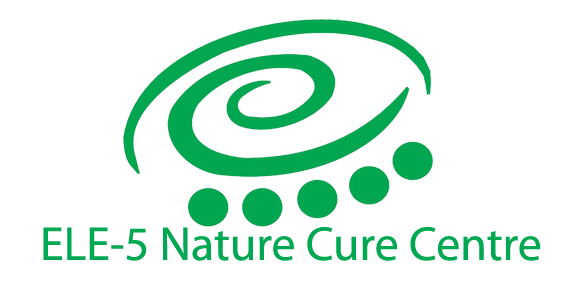Mudras
What are Mudras? How do we define them?
As per Eastern philosophies and culture and Yogic practices, ‘Mudras’ are systematic hand gestures. Literally, Mudra in Sanskrit means a posture/seal.
More deeply, “closed electrical circuits” of the subtle channels in physical and etheric bodies are also known as ‘Mudras’.
Some Western writers have defined ‘Mudra’ as mystic hand gestures used to focus subtle energy, transmit teachings through symbols and confer psychic protection.
Chogyam Trungpa says Mudra is “a symbol in the wider sense of gesture or action………Also it is a symbol expressed with the hands to state for oneself and others the quality of different moments of meditation…….”
Leaving aside the complex definitions offered by various people and sects, we will summarise to say that:
Mudras are a non-verbal mode of communication and self expression consisting of hand gestures and finger postures. They retain the efficacy of the spoken word. It is an external expression of inner resolve, suggesting that such non verbal communications are more powerful than the spoken word.
In Yoga mudras denote the finger and hand gestures and movements used in the performance of dances, rituals and rites and while engaging in spiritual exercises such as meditation. Mudras symbolically express inner feelings and inner psychological states. They also generate various qualities such as fearlessness, power, charity and peace in the practitioner and to on-lookers.
The Gherand Sanhita and the Vajrayana Tantra advise that the Mudras are capable of bestowing great powers and psychic abilities called “Siddhies” on their practitioners, hence, their knowledge should not be conveyed to those steeped in sin, to those that are not true to their word, to the skeptics and non believers, to heretics and insincere persons and those who do not observe the precepts.
Mudras have therefore always been considered an esoteric science and even as of date there are thousands of Mudras that are not available to the uninitiated (like in the Chen Yen Buddhism or True Buddha Schools). However, besides the mudras providing spiritual gains, there are mudras which are likewise of tremendous value in therapy. Constant researches by the dedicated have brought a large number of these to the fore although we still seem to be scratching the surface only of this sea of knowledge.
Where and how Mudras originated
No one knows for sure where and how mudras originated. They have been in use for millenniums. They have not ben known to adhere to any barriers . They have been found in all continents, practiced by people of all religions and those professing none. They are as natural to the body as the daily needs of the body. All that was required was to recognize them, identify them and scientifically understand and use them.
- In the Orient these can be observed in the rituals and rites of the rich cultural traditions of Hinduism and Buddhism in India, Tibet, China, Japan Indonesia etc. The paintings in the caves of Ajanta and sculptures in the Ellora caves, dating back to 2nd. and 1st. centuries BC show innumerable mudras.
Hinduism shows the earliest recorded knowledge and analysis of Mudras. The earliest documentations are found in Mantra Shastra (the book of incantations), Upasana Shastra (the book of worship and prayers) and the Nritya Shastra (the book of classical dances). The following verse from Srimad Bhagwad Gita mentions that Lord Krishna was in the posture of Gyan Mudra when he bestowed the knowledge of Gita to Arjuna.
Prapannapaarijaataaya totravetre paanaye,
gyaan mudraaya Krishnaaya geetaamritaa duhe namah
- In Jainism, Swami Mahavir Jain and in Sikkhism, Guru Nanak Devji are always shown in Gyan or Dhyan Mudra.
- In the Occident, cheironomy is the science of hand gestures (mudras). In Christian art Jesus, John the Baptist and Virgin Mary are shown in various Mudras. Reference may be had from the book “The sign Language of the Mysteries” by J.S.M.Ward. Even today, the sign used by the priests of Catholic Churches while blessing the devotees, is what is shown elsewhere in this article as “Mahagyan Mudra”
- Egyptian hieroglyphics are a virtual treasure house of mudras. The postures of their kings and queens even as mummies show them holding mudras.
- The Babylonian sun God Damuzi depicts Mudras while descending into the underworld.
- In Islam, the mystical Whirling Dervishes used Hand signs or Mudras for various rites and rituals.
- Roman art is replete with mudras.
Man only has that supreme power in his soul, that when scientifically endowed with Yoga, can help him achieve all the three sublime powers – the physical, mental and spiritual. All that is needed is the guidance and the rules of Dhyana (meditation) and Practice (sadhana)
There are various supreme sciences for the investigations on and into the human mind and body. Some of these are:
| Mudra Vigyan | The science of finger postures |
| Kayakalpa Vigyan | The science of rejuvenation |
| Brahma Vidya | Divine knowledge – theosophy |
| Pranvinimaya Vidya | The science of curing the sick and the defective |
| Surya Vigyan | The science of solar energy |
| Punarjanma Vigyan | The science of reincarnation |
| Deerghayu Vidya | The science of longevity |
| Swar Vigyan | The science of sounds |
| Rasayan Vigyan | The science of Alchemy |
| Mantra Vigyan | The science of spiritual incantation |
| Samyad Preshan Vidya | The science of Telepathy etc. |
There are many many more covering all aspects of science known to man today and those that modern science still has to discover again.
YOG TATVA MUDRA VIGYAN or in short, the more commonly known MUDRA VIGYAN is an entirely distinct and independent branch of yoga. This is the science of finger postures, based on Yoga of elements that go to create the human body. The science that can help raise the human being to achieve almost divine powers and keep the body perfectly fit.
